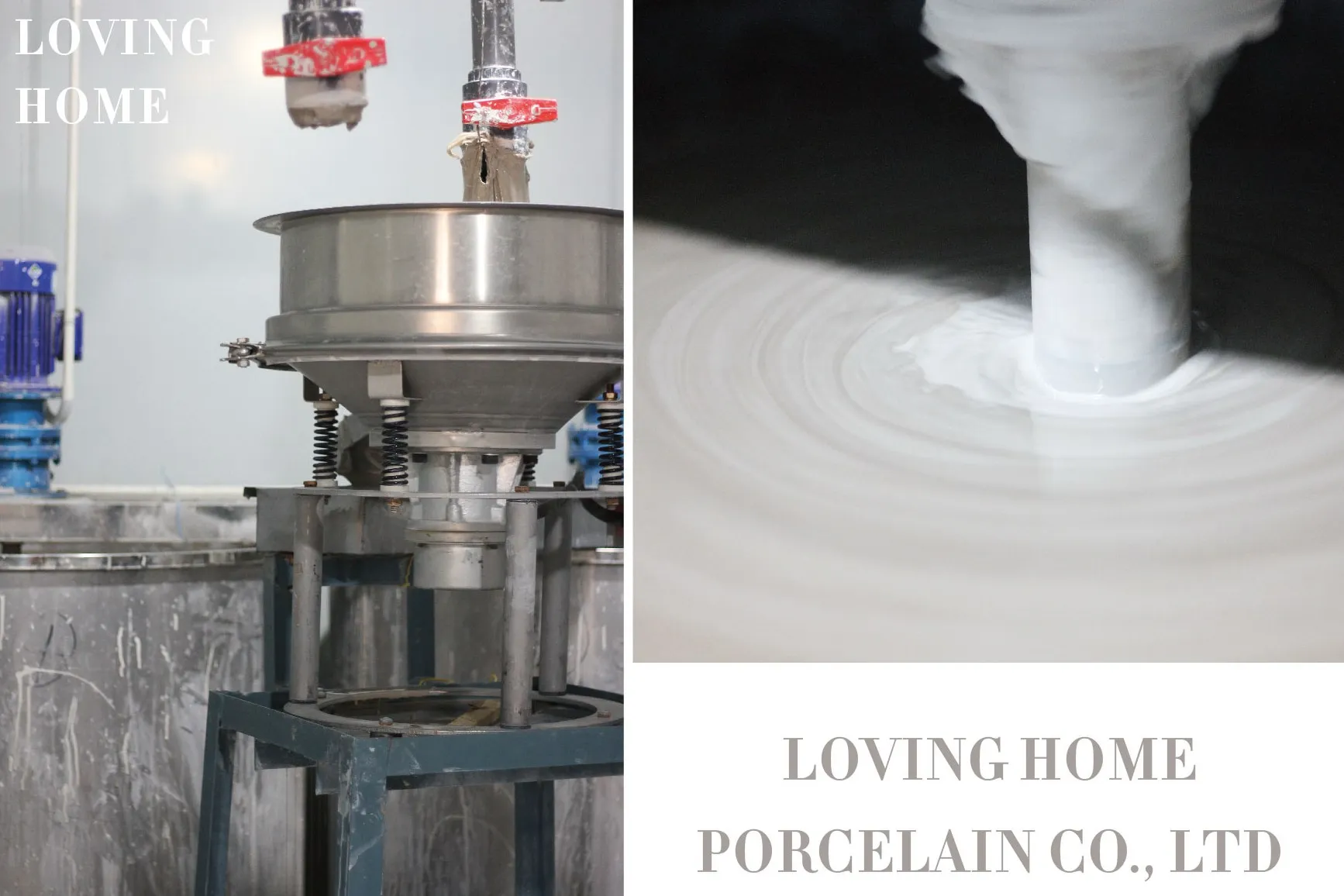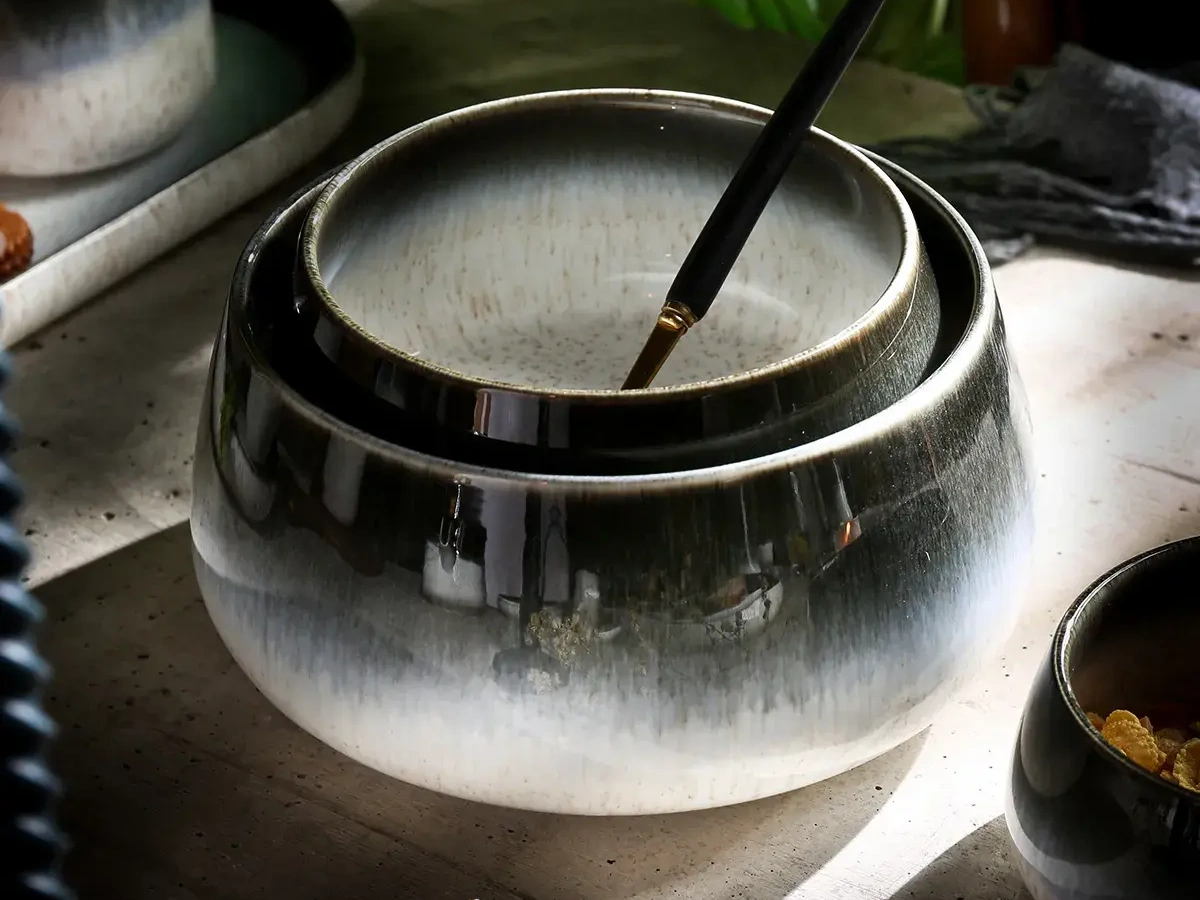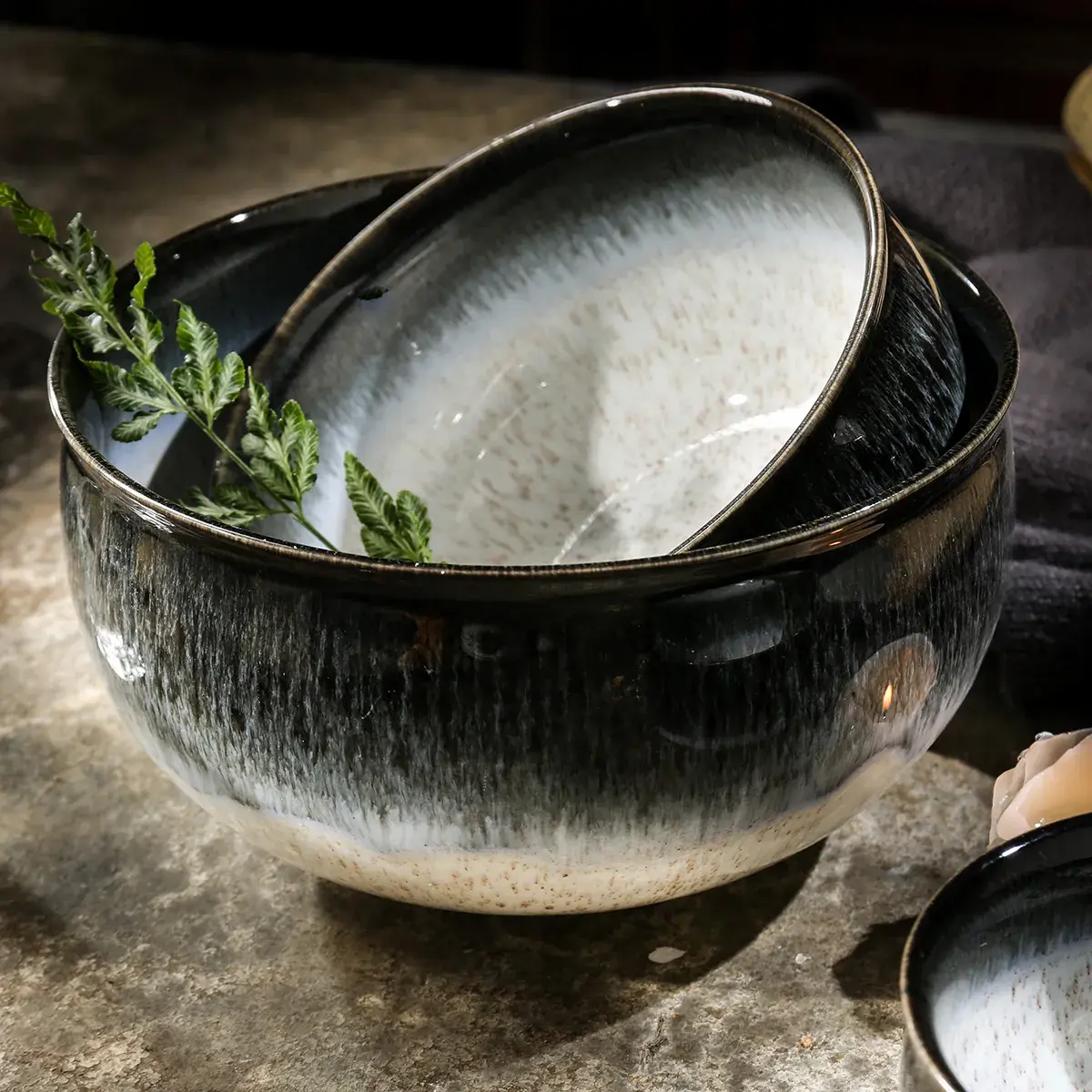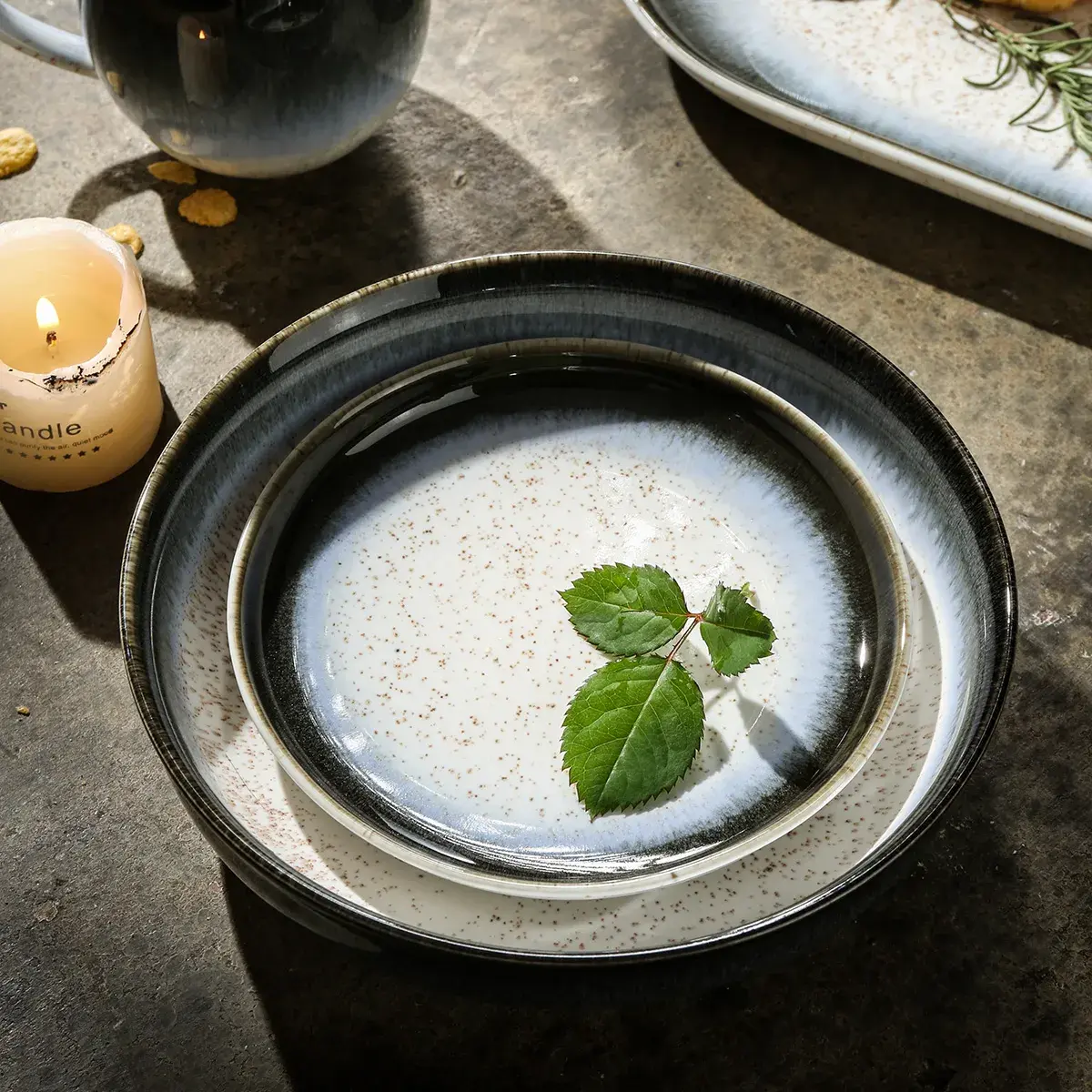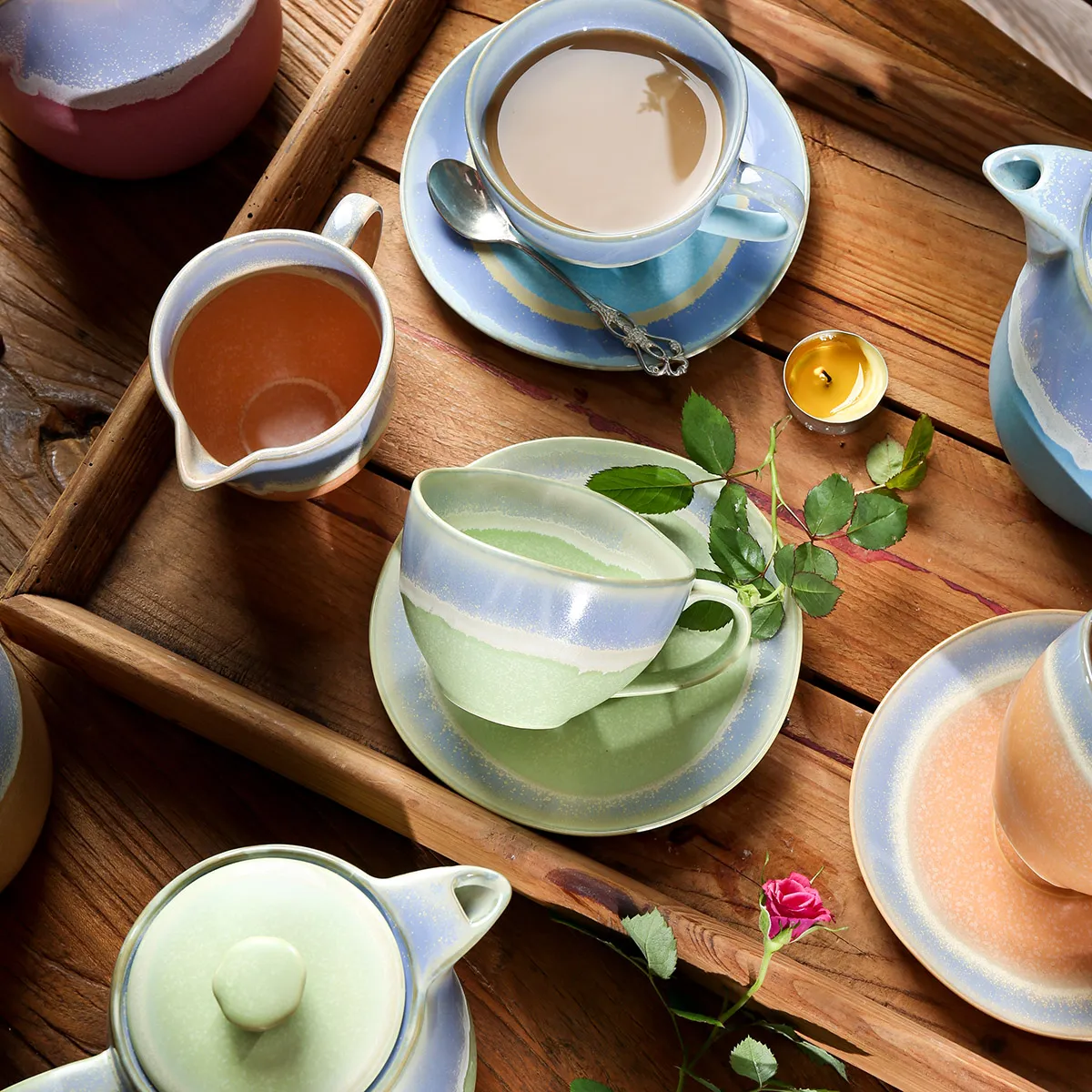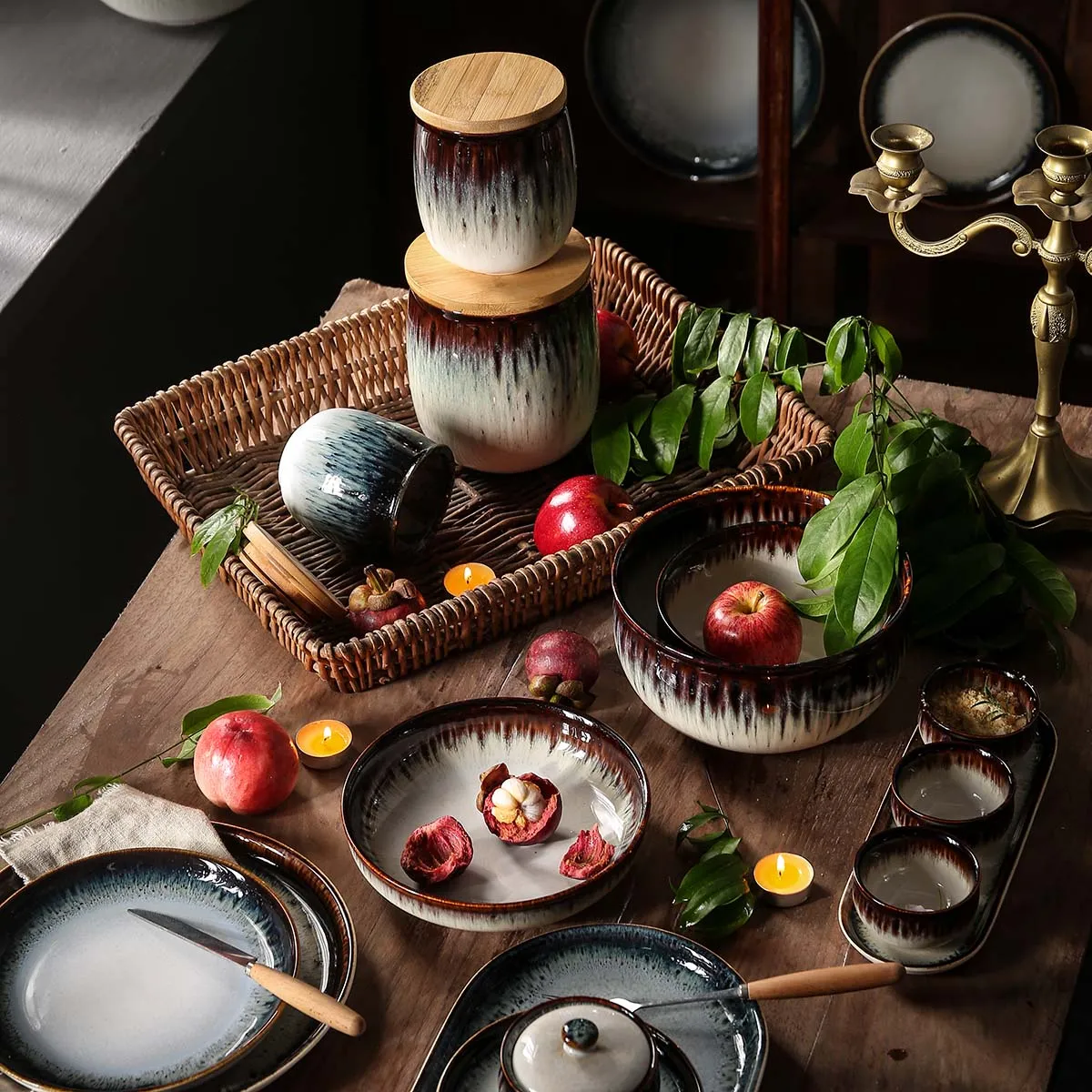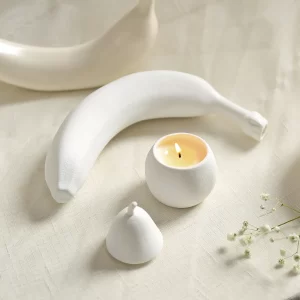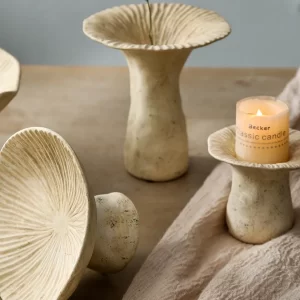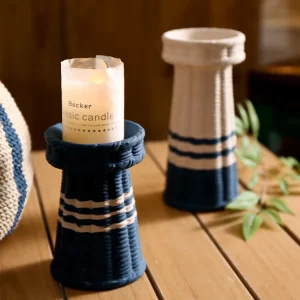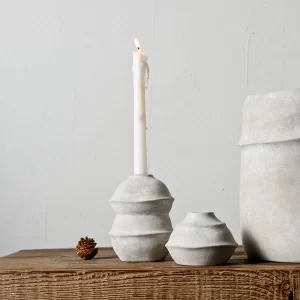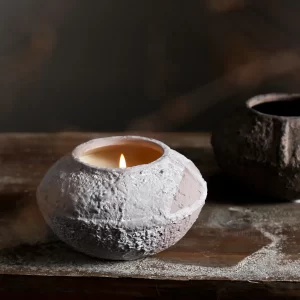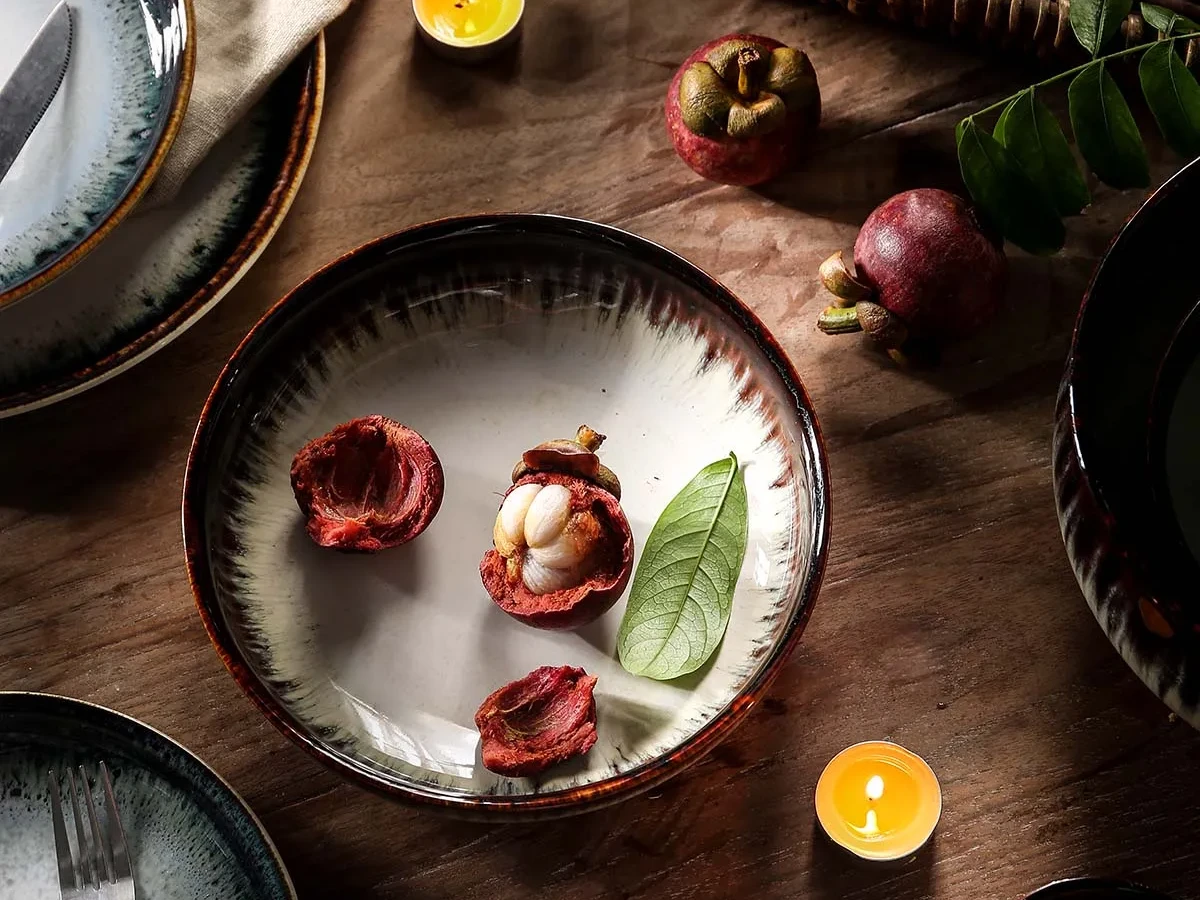
L'émail réactif modifie l'aspect de la vaisselle moderne. Êtes-vous intrigué par la vaisselle aux couleurs fluides et aux textures distinctes qui rendent chaque pièce spéciale ? Cet article présente le monde passionnant de l'émail réactif. vaisselle à glaçure réactiveIl s'agit d'un produit de qualité artisanale, dont on ne sait pas encore comment il est créé, et comment l'inviter à votre table.
Qu'est-ce qu'une glaçure réactive ? Le summum de l'art de la table
Dans le monde de la vaisselle en céramique, l'émail réactif est un matériau extraordinaire. Contrairement aux émaux standard qui produisent une couleur unique ou un brillant uniforme à la surface, un émail réactif est conçu pour aider à développer les propriétés de la céramique. variations de débit et réactions lorsqu'il est cuit à haute température.
En termes simples, lorsque le four atteint la température maximale, les différents produits chimiques contenus dans l'émail réagissent, se séparent, cristallisent ou s'écoulent à la surface. Le résultat de ces interactions chimiques est le suivant :
- Une riche stratification
- Mouchetures ou marbrures uniques
- Transitions et mélanges de couleurs naturels
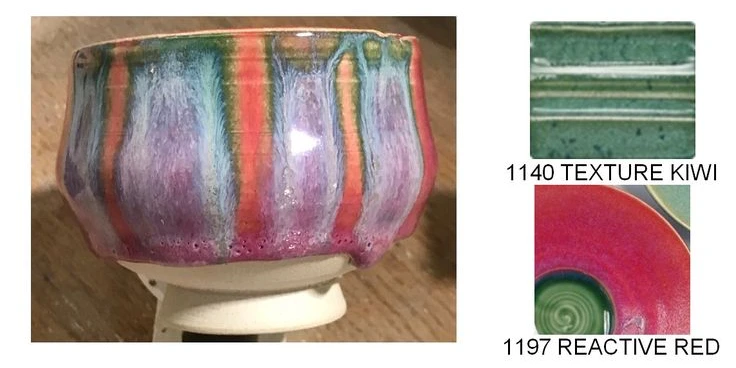
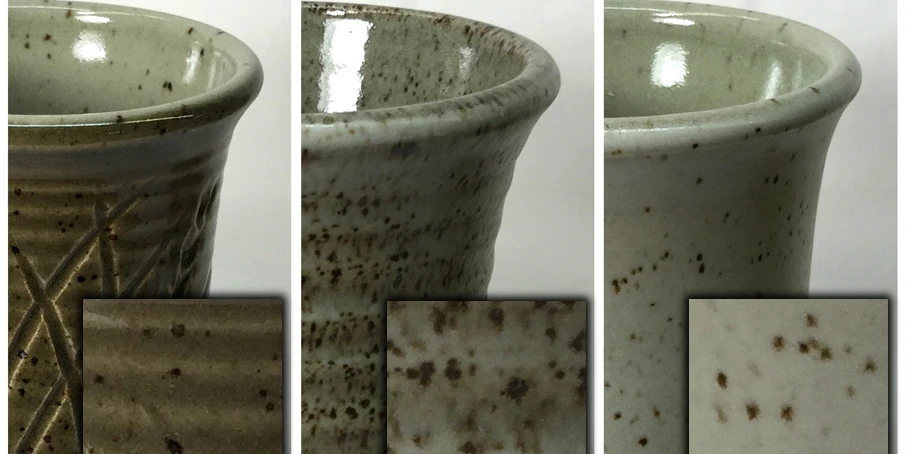
Cela signifie que chaque plat produit avec un émail réactif est une œuvre d'art unique. Même avec un émail identique et un programme de cuisson identique, les variations de couleur et de texture seront toujours légèrement différentes, et c'est ce qui fait la beauté de tous les émaux réactifs.
L'art et la science de la glaçure réactive
La magie d'une glaçure réactive provient de sa formule chimique complexe et des méthodes de cuisson spécialisées :
| Élément clé | Comment ça marche | Ce qu'il crée |
|---|---|---|
| Oxydes métalliques hautement réactifs | L'émail contient un pourcentage élevé d'ingrédients actifs (comme les oxydes de fer, de manganèse et de zinc). | Ceux-ci réagissent intensément avec les autres composants de l'émail à haute température, produisant des variations de couleur et de texture. |
| Technique de superposition des glaçages | Les artisans peuvent appliquer deux ou plusieurs couches de formules de glaçage différentes. | Les couches se mélangent, se repoussent ou se fondent les unes dans les autres pendant la fonte, créant ainsi une profonde impression de profondeur et de couleur. |
| Contrôle de l'atmosphère du four | L'atmosphère du four (cuisson d'oxydation ou de réduction) influence considérablement le résultat. | La cuisson de réduction, en particulier, peut réduire les oxydes métalliques pour produire des teintes uniques telles que des rouges ardents et des bleus profonds, qui sont des caractéristiques communes de l'émail réactif. |
Glacis réactif vs. émaux traditionnels
| Caractéristique | Glacis réactif | Glacis traditionnel (brillant/mat) |
|---|---|---|
| Artistique/unique | Chaque pièce de vaisselle est une œuvre d'art individuelle. | Faible ; la couleur et l'effet sont uniformes et faciles à produire en masse. |
| Profondeur de couleur | Riche, multicouche et fluide. | Uniformes et d'aspect plus plat. |
| Difficultés de production | Très élevé ; nécessite un contrôle précis de la température et de l'atmosphère. | Plus bas, la fenêtre de tir est plus large. |
| Pertinence des tendances | Très populaire, il incarne une esthétique artisanale et naturelle. | Classique et intemporel, ou limité aux tendances saisonnières. |
Glacis réactif Pour
- Impact visuel suprême : Il apporte une amélioration instantanée à votre table en lui conférant une impression d'élégance et de caractère.
- Déguisements Défauts : La texture riche de la glaçure permet de camoufler les petites rayures et les marques d'ustensiles.
- Beauté artistique : Il s'inscrit parfaitement dans les tendances contemporaines en matière d'esthétique de la maison, qui s'articulent autour de la beauté organique, de l'artisanat et du style Wabi-Sabi.
Glacis réactif Cons
- Défis en matière de cohérence : Il est difficile d'obtenir une cohérence totale entre les lots.
- Coût plus élevé : Les formules de glaçage complexes et les exigences précises en matière de cuisson entraînent généralement des coûts de fabrication plus élevés.
La sécurité alimentaire des Glacis réactif
Nombreux sont ceux qui se posent la question suivante : étant donné qu'un glaçage réactif implique des réactions chimiques et des flux aussi complexes, la sécurité alimentaire peut-elle être garantie ?
La réponse est oui : Une glaçure réactive fabriquée par des professionnels est sans danger pour les aliments.
Au LovingHomeChaque pièce de notre glaçure réactive vaisselle doivent passer des tests stricts de sécurité alimentaire. Nous garantissons la sécurité par :
- Stabilité de la formulation : Nos formules de glaçure réactive sont méticuleusement conçues pour que, même si les ingrédients actifs s'écoulent pendant la cuisson, la couche de glaçure vitrifiée finale soit chimiquement stable et inerte, empêchant la lixiviation de substances nocives.
- Cuisson à haute température : Nous veillons à ce que tous nos produits de glaçure réactive soient entièrement vitrifiés aux températures élevées spécifiées, créant ainsi une couche protectrice solide et impénétrable.
- Certification faisant autorité : Nos produits sont conformes aux normes internationales relatives aux matériaux en contact avec les aliments, ce qui vous permet d'utiliser notre vaisselle en toute tranquillité.
Questions fréquemment posées sur la vaisselle à glaçure réactive
Q1 : Une glaçure réactive est-elle facile à nettoyer ?
R : En général, oui. La surface d'une glaçure réactive étant une couche de verre lisse et entièrement vitrifiée, elle est aussi facile à nettoyer que d'autres glaçures brillantes. La texture fluide de l'émail ne crée pas de pores difficiles à atteindre.
Q2 : Pourquoi mes deux pièces de vaisselle en émail réactif sont-elles différentes ?
R : Il s'agit d'une caractéristique inhérente qui fait partie de la valeur d'une glaçure réactive ! De minuscules différences de température ou d'atmosphère dans le four peuvent entraîner des variations uniques. Il s'agit d'une œuvre d'art et non d'un défaut.
Q3 : La vaisselle à glaçure réactive peut-elle être lavée au lave-vaisselle ?
R : Oui, notre vaisselle à glaçure réactive est très durable et peut être utilisée en toute sécurité au lave-vaisselle.
Partenaire de LovingHome : l'art à votre table
Depuis 2004, LovingHome a également été à la pointe de la technologie dans le domaine de la céramique. vaisselle. Nous maîtrisons l'art élaboré de la glaçure réactive et nous nous engageons à équilibrer idéalement cet art personnalisé avec votre vaisselle de tous les jours.
Nous pensons également que chaque article de vaisselle sur votre table doit avoir une histoire à raconter. Grâce à notre savoir-faire spécialisé, vous pouvez accéder à des produits en émail réactif qui sont élégants, hautement sécurisés et vraiment uniques.
Contact LovingHome dès aujourd'hui pour obtenir notre catalogue exclusif de vaisselle et apporter à vos clients une esthétique gastronomique inégalée grâce à nos projets OEM/ODM !
